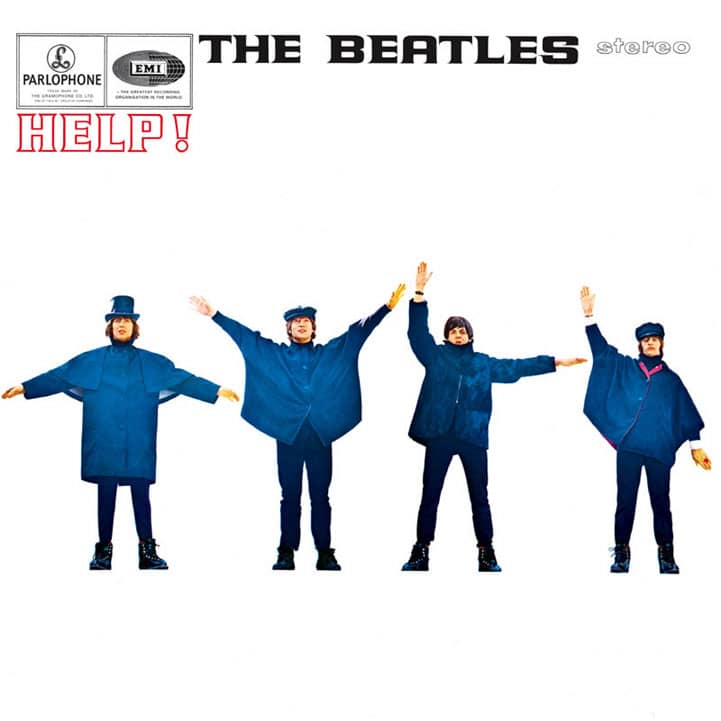Another Girl is another track from the excellent side one of the Help! album. As discussed a couple of days ago in the context of The Night Before, this is a sequence of relentlessly accessible and commercial songs which shows the Beatles complete mastery of pop. The sequence begins and ends with the hit singles Help! and Ticket To Ride, and the tracks in between might therefore be regarded as album “filler”, but discussing Another Girl in his authorised biography Many Years From Now, McCartney points out that this is not really accurate:
It’s a bit much to call them fillers because I think they were a bit more than that, and each one of them made it past the Beatles test. We all had to like it. If anyone didn’t like one of our songs it was vetoed. It could be vetoed by one person. If Ringo said, ‘I don’t like that one,’ we wouldn’t do it, or we’d have to really persuade him.
I’ve argued before that this quality control, combined with their drive to create commercial records, lay at the heart of the Beatles early success and plays a big part in their longevity. All their innovation and creativity would have had far less impact if they had not been committed to achieving both high quality and mass appeal.
‘Another Girl’, released on the soundtrack to The Beatles’ second film Help!, was written by Paul McCartney while on holiday in Tunisia.
 Continue reading on Beatles Bible →
Continue reading on Beatles Bible →The lyrics of Another Girl are interesting in that McCartney really did have, at various times, “another girl”, sometimes even more than one. At the time the song was written (early 1965) McCartney was in the middle stage of a long-term relationship with Jane Asher. He had moved into her family’s home and became deeply integrated with their social circle. Asher and McCartney had a fairly tempestuous relationship with their arguments and breakups sometimes figuring in his songs; later that year she would be the subject of I’m Looking Through You and, in 1966, For No One. He told his biographer Barry Miles:
“I don’t have easy relationships with women, I never have. I talk too much truth”
Speaking about Lennon’s Run For You Life, McCartney told Miles:
“… none of my songs would have ‘catch you with another man’. It was never a concern of mine, at all, because I had a girlfriend and I would go with other girls, it was a perfectly open relationship…”
but in fact, McCartney was not entirely happy for the relationship to be completely open as he told Miles:
I remember more one time when she was working at the Bristol Old Vic and she’d got a boyfriend in Bristol and was going to leave me for him. That was wildly traumatic, that was ‘Uhhhh!’ Total rejection!
And he told Hunter Davies:
Jane left me once and went off to Bristol to act. I said ‘OK then, leave, I’ll find someone else.’ It was shattering to be without her.
So for McCartney, like the protagonist of Another Girl, the idea that one girlfriend might be replaced by another was likely not an entirely abstract thought. It is perhaps telling that like For No One (written on a skiing holiday with Asher) and I’m Looking Through You (written in Asher’s house), Another Girl was also written while McCartney was spending time with Jane (this time on holiday with her in Morocco).
Back in London and later, in 1966, McCartney began a parallel three-year relationship with Maggie McGivern. McCartney and Jane Asher continued their relationship, and although he was having doubts about his long-term commitment, they eventually got engaged and moved into a flat together. However, in July 1968 the couple finally split when Asher arrived home unexpectedly to find McCartney in bed with yet another girl, Francie Schwartz. As Barry Miles puts it: “Though he was not lacking female company, Paul was on the lookout for someone special” and by September 1968, Paul’s future wife Linda (who he had met and spent time with in 1967) was staying at his flat during the recording of the White Album. They were married in March of the following year.
While McCartney apparently saw little wrong in the way he organized his love life in his early twenties, marriage evidently changed him. By all accounts Paul and Linda became one of showbusiness’ most committed couples, spending only a few nights apart in their married lives together.

